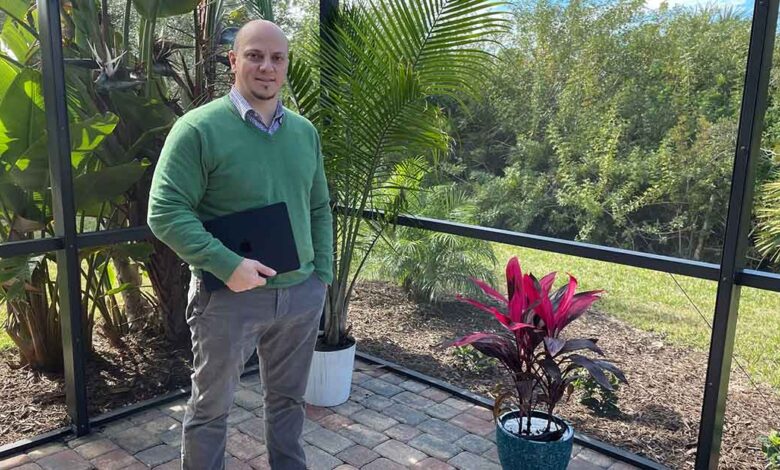RPM reduces 30-day readmission rates by 50% at Lee Health

Connected care at-home technologies enable behavior change and empower individuals and clinicians to make informed decisions about healthcare treatment. By using them, providers can enhance patient engagement, allowing for personalized and proactive care management that drives better health outcomes and better care experiences.
Moreover, these at-home and remote patient monitoring technologies can optimize resource utilization, streamline care delivery, reduce length of stays in the acute setting, and reduce readmissions – leading to a tangible return on investment for healthcare organizations.
Digital care at home
Dr. Zsolt Kulcsar, system medical director at Lee Health/Virtual Health, based in Fort Myers, Florida, is an expert in virtual care and at-home technologies. He is scheduled to speak at the HIMSS24 Global Conference & Exhibition in a session entitled “Digital Care at Home That Improves Clinical and Patient Outcomes.” Here he offers a peek at the session’s themes and goals.
“The focus of our session is how technology enables and enhances clinical workflows and patient experiences and outcomes, especially when applied to an emerging area of telemedicine like remote patient monitoring,” he explained. “Many healthcare providers have been offering RPM to their patients for more than 10 years in more traditional settings like home health during the few weeks while the home health team was involved in a patient’s care.
“The purpose of using RPM was to improve the management of a chronic condition such as heart failure by feeding physiologic data to the care team – the RN, PT, respiratory therapist visiting the home – to enhance outcomes,” he continued. “RPM has become more widely used and accepted since the creation of independent billable CPT codes in late 2018, which can be billed independent of home health episodes – normally a bundled payment for all services rendered.”
This new payment modality has fueled RPM adoption and incorporation into various aspects of care. As a result, RPM is now an emerging area of intense focus and attention of health systems because it has long been recognized to improve data-driven care in the home and provide meaningful education to patients for self-management in a way that can provide revenue for the treatment team, he added.
RPM tech has advanced greatly
“In addition, the technology used to deliver care via RPM has advanced greatly, where the equipment has become cheaper, smaller, and integrated into a kit that captures multiple pieces of physiologic data including blood pressure, heart rate, oxygen saturation, weight and patient-reported outcomes via surveys,” Kulcsar explained.
“The technology in the kit also allows patients to provide instant feedback on how they feel, communication with their treatment team via text, phone call or video call, serving as a lifeline in the home,” he continued. “Vendors have emerged that are able to create these kits, which are FDA-approved for their ability to collect medical-grade data and wrap around logistic services that makes it easier to get them into the hands of patients who could most benefit from the care delivered through these devices.”
The session will highlight the care delivered at Lee Health after working with Health Recovery Solutions – the Best in KLAS RPM vendor for the last four years.
“We will share how the RPM technology was applied to improve patient care through a newly created department that was independent of home health, which allowed our team to capitalize on billing, help create a sustainable program, and move the needle from simple remote patient monitoring to an enhanced level of acute care at home that we call remote patient management,” Kulcsar said.
“We have built a uniquely structured clinical team that takes the base layer of pairing every patient in our program with a registered nurse and enhancing the care delivered by pairing an advanced provider – a nurse practitioner or physician assistant – to those RNs performing triage for instant ability to perform an intervention based on physiologic data received,” he continued.
Physician oversight
In addition, the department is overseen daily by a physician/medical director who builds pathways of care, serves as escalation for the advanced providers and enhances the outcomes of the patients enrolled in the program through collaboration with patients’ specialists and primary care team.
“The structure of our department is considered more advanced than many other RPM programs due to the additional layers of advanced providers and physician involvement,” Kulcsar noted. “Our session will highlight that team structure will be important to first capture billing for the care rendered and elevate the patient experience and outcomes.
“Anyone who is embarking on creating an RPM program can take note of this unique structure as it has served the population of Lee Health well,” he continued. “When the technology was applied to southwest Florida patients, we saw an overall reduction of 30-day readmission rates for all clinical pathways by 50%.”
Using the technology as-is, Lee Health saw an adherence rate of 80% to daily vitals, which is higher than the industry average due to ease of use of technology and ability to remind patients digitally to take their biometric readings, he added.
“Our clinical team has also created tight protocols to be able to treat patients in our program without having to call the referring PCP or specialist for the patient due to integration of the clinical providers and using natively embedded EHR communication tools,” he concluded.
“Digital Care at Home That Improves Clinical and Patient Outcomes” is scheduled for March 12, from 2-3 p.m. in Room W307A at HIMSS24 in Orlando. Learn more and register.
Follow Bill’s HIT coverage on LinkedIn: Bill Siwicki
Email him: [email protected]
Healthcare IT News is a HIMSS Media publication.



